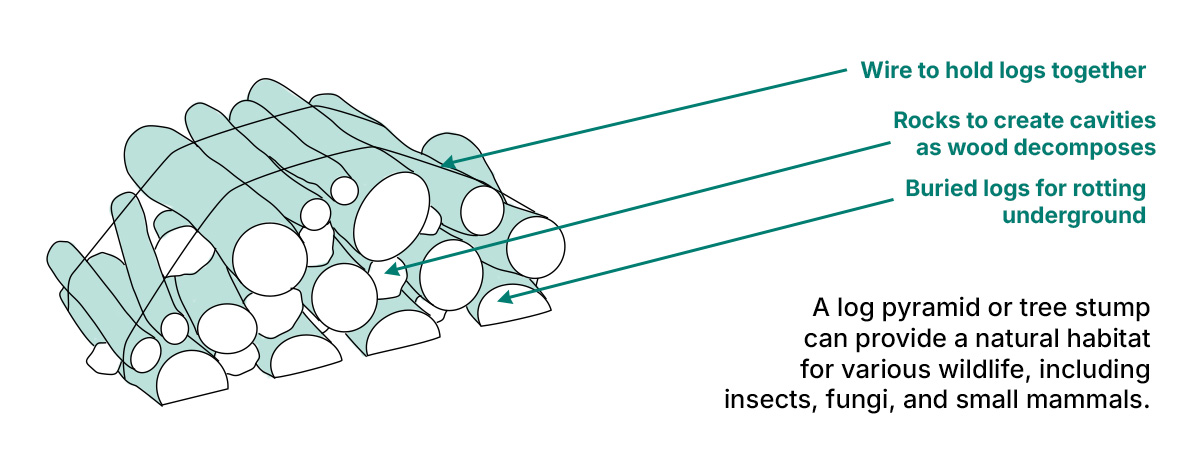What is it?
Let’s take the term loosely: log piles are any stack of logs, branches, sticks and stumps that have been left to decay in peace and quiet. Ideally the log pile will be at least partially enclosed underground, kind of like a brown, rotty iceberg. They may be tied together with wire or string to stop them falling over or being moved by intrusive hands and paws. Quite often they’ll include a mix of more and less rotten wood to provide a spectrum of habitats and food sources. Harder, longer-lasting logs and sometimes stones may help create and maintain structure too, providing gaps and passageways, whilst placing the most rotten wood at the heart of the log pile helps to kick-start its value as a food and heat source.
What does it do?
Lots! Log piles mimic fallen trees and branches in the wild, creating long-lasting and hugely valuable habitat for a range of creatures by providing food, shelter and breeding grounds. A huge amount of energy and nutrients is locked up in wood. This is slowly released to the food chain by fungi, pretty much the only organisms capable of digesting wood. Rotting wood generates heat, creating warm hideaways underground where wildlife large and small can see out the harsh cold of winter.
Log piles provide cover – lots of nooks and crannies in which to shelter from adverse weather and hide from predators or to ambush prey. These hideaways can also make for warm, dry nesting sites in winter and cool, moist refuges in hot and dry summer spells.
Who benefits?
Log piles provide habitats for insects and other invertebrates, fungi, amphibians, reptiles, and small mammals. Hedgehogs may breed in there. Frogs will hydrate and keep warm or cool in there. Both will shelter from predators there and feed on the rich supply of slugs and bugs that specialise in eating dead plant matter, as will countless other animals including birds like song thrushes. Butterflies and moths may hide out in log piles, in some cases over-wintering in them. Insects that feed, hydrate, breed and hide away in there may become food for birds, bats and dragonflies once they take to the wing. Spectacular stag beetle larvae feed on rotting wood underground and adult females may return to the same site they emerged from as new adults to lay eggs there.
Find out more
For more information, download the Wildlife Gardening Forum guide to a range of ‘habitat piles’ including log piles.


